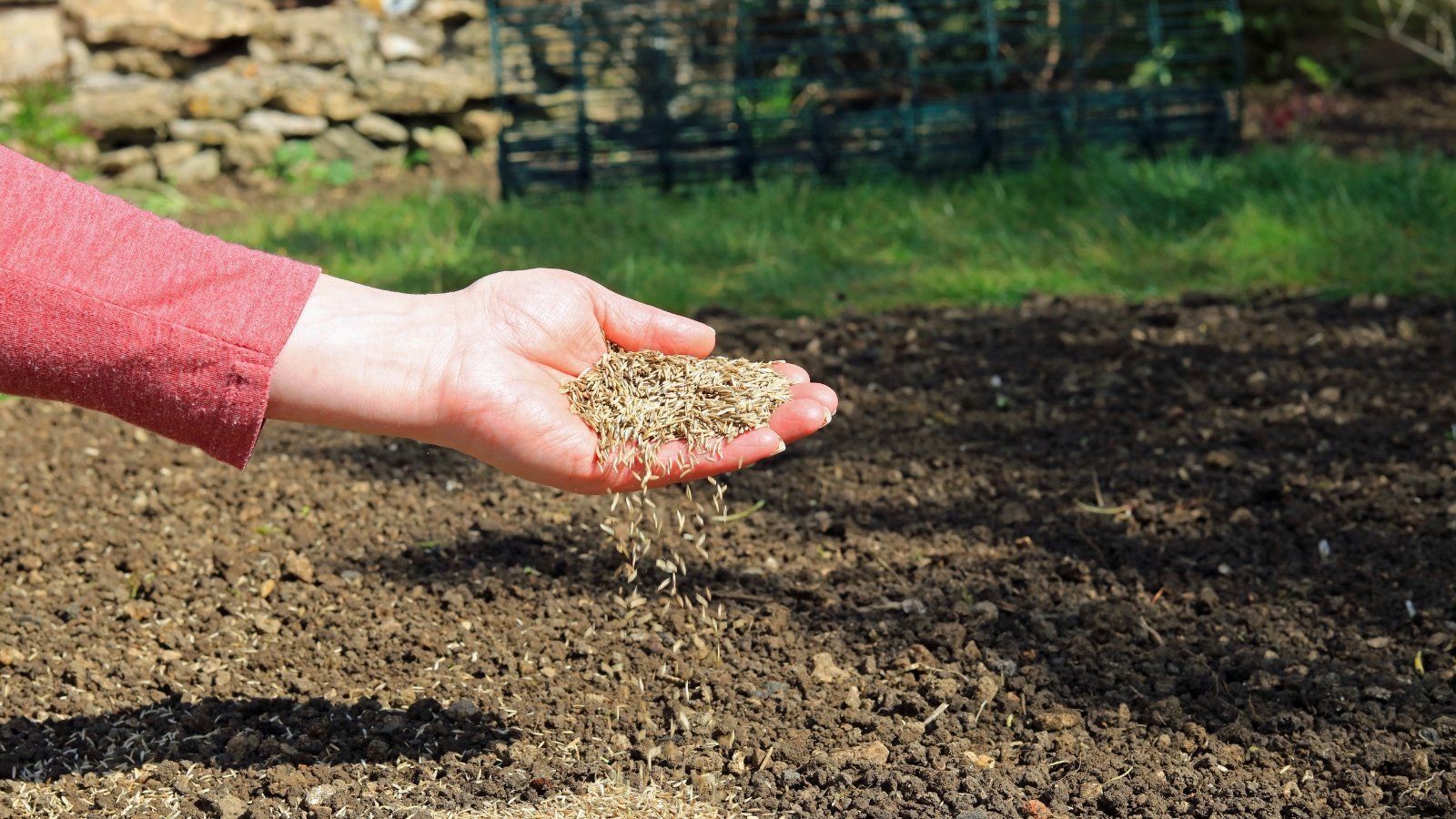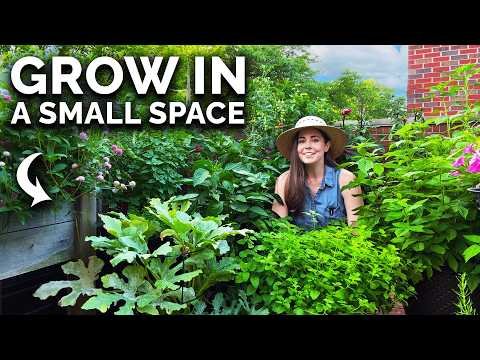Late summer and early fall are the prime times to plant grass seed. The lawn may be a little worn from summer fun or heat, moisture, pest, or disease issues that take their toll. You may be ready to reimagine the turf, reshaping and refreshing existing zones.
Whether filling in bare patches or seeding a new lawn, site preparation and choosing the right type of grass are keys to longevity. Plant the right type of seed at the right time for your growing area, and prep the soil for a strong foundation for lush, healthy grass.
Grass Seed Planting Basics
Turfgrass broadly falls into two main types: warm-season and cool-season. Warm-season grasses grow in zones 7 and above and include Bermuda, St. Augustine, centipede, and zoysia. Cool-season grasses grow in zones 6 and colder, with Kentucky bluegrass, perennial ryegrass, and tall and fine fescues as common species.
The first consideration for your site is grass type by growing zone, followed by additional factors like sun exposure and use. Opt for a blend or mix that suits the particular sun and shade conditions and foot traffic/durability needs. Grasses also have variable maintenance requirements.
For best success, start with high-quality seeds in labeled packages. Check the label for seed purity, germination rates, and testing dates for viability. Grass seed is often available as “blends” or combinations of varieties within the same species. “Mixes” contain multiple grass genera and types to fit conditions like sun, shade, temperature, and moisture.
Measure the area for seeding to get the right amount of bulk seed, usually in pounds per 1,000 square feet. Scattering extra seed is tempting, but too much leads to overcrowding and potential diseases. Small patches won’t require much for infill.
Warm Season Turf
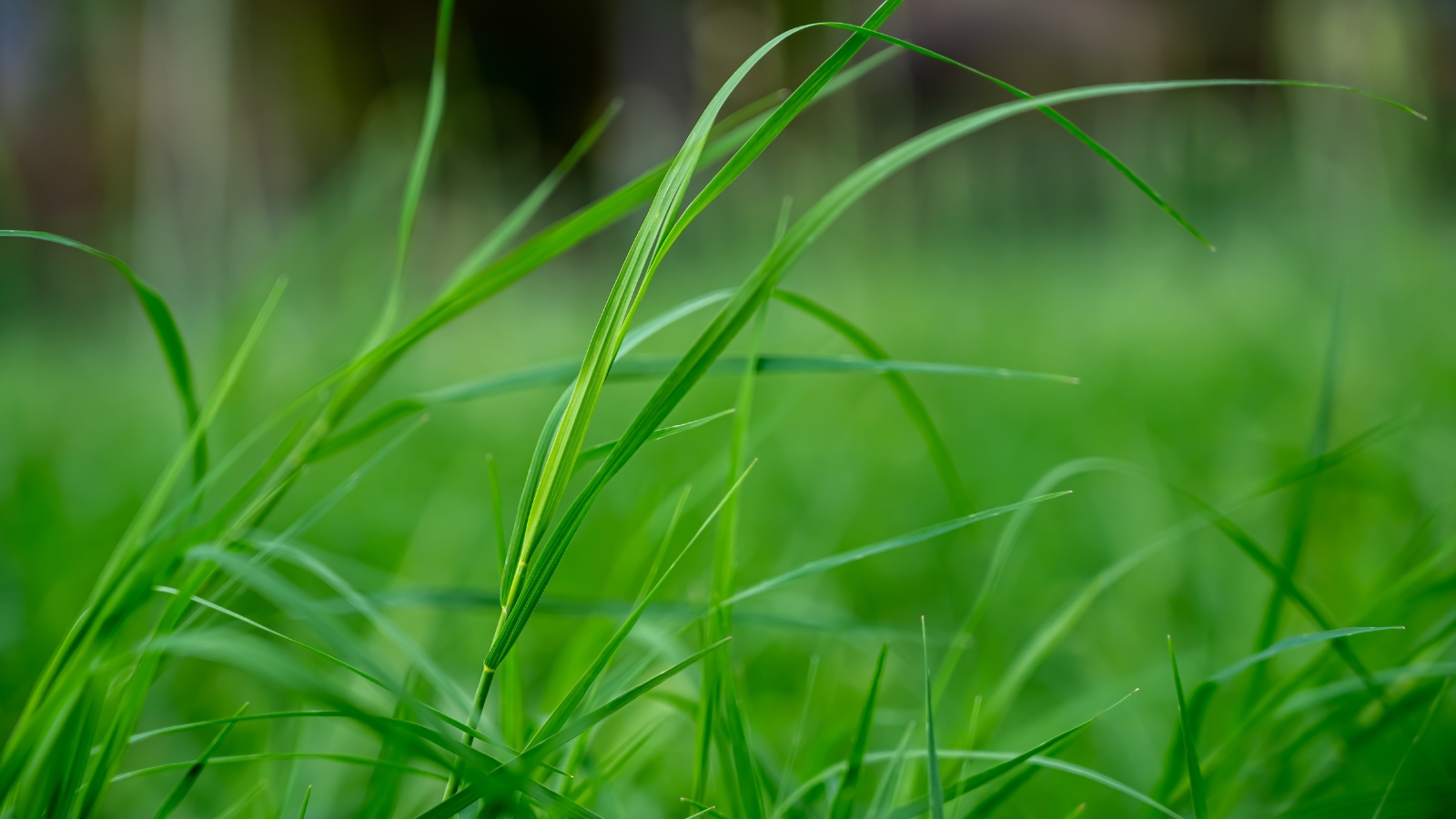
Bermuda (Cynoda spp.) is a fine-bladed, high-quality turfgrass used in various settings, from golf courses to yards to slope erosion control. It grows well across the southern U.S. and adapts to varying soils. Its fine-textured blades form a dense mat in light to deep green shades. Bermudagrass tolerates wear, salt, and drought. It’s a good option for high-traffic areas. It needs full sun to thrive and degrades in shady spots.
Centipede (Eremochloa ophiuroides) has a medium texture and forms a dense emerald mat that suppresses weed competition. It spreads by stolons with aggressive runner stems. It’s low-maintenance, requiring fewer fertilizers and more infrequent mowing. Centipede tolerates partial shade but grows best with at least six hours of sun. It doesn’t hold up well to heavy traffic or deep shade.
Zoysia (Zoysia spp.) has a soft, fine texture in rich, deep green. It tolerates drought conditions and is among the most cold-tolerant of the warm season grasses. Zoysia grows in full sun to partial shade, becoming thin in deep shade. It’s more high-maintenance than centipede in terms of required mowing and fertilizers.
St. Augustine (Stenotaphrum secundatum) is the most shade-tolerant of the warm-season types, growing in four to six hours of sunlight. Its broad, blue-green blades form an attractive lawn. However, St. Augustine is susceptible to winter damage and wear from heavy foot traffic, plus it tends to be a poor choice in areas with water restrictions. St. Augustine is not commonly available from seed due to the species’ minimal seed production. It’s grown vegetatively from plugs or sod.
Cool Season Turf
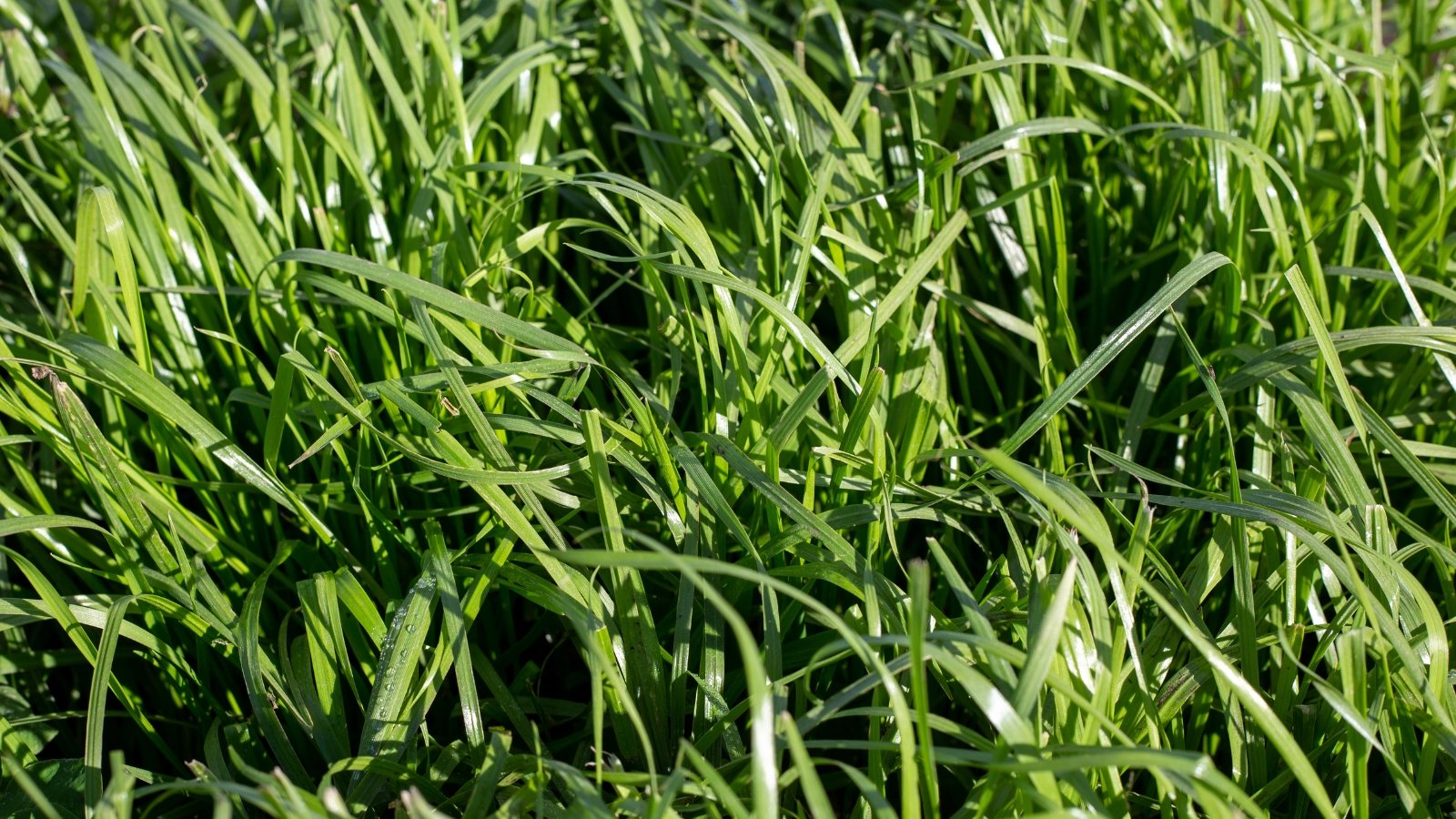
Cool-season grasses withstand cold temperatures and thrive in spring and fall. They may slow or become dormant in winter and high summer heat. Typical cool-season growers include:
Kentucky bluegrass (Poa pratensis) is deep green-blue with attractive fine to medium blades. The leafy mat recovers well from damage with aggressive rhizomes. It grows well in full sun and tolerates partial shade. Kentucky bluegrass prefers cool temperatures and slows during the heat of summer. It’s often mixed with perennial rye and fescues for a balanced seasonal performance.
Perennial ryegrass (Lolium perenne) resembles Kentucky bluegrass and fescue. It has versatile uses in mild climates, from lawns to golf courses. Areas with moderate winters overseed dormant grasses with rye to allow year-round greens. Rye grows quickly, creating a lush look in about three weeks.
Fescue (Festuca arundinacea) tolerates seasonal temperatures and is relatively low-maintenance and drought-tolerant. Tall fescue has broad, flat blades, while fine fescue is narrow and needle-like. Both create a soft, deep green ground cover. Fescue has good shade tolerance, especially fine varieties, while tall fescue tolerates more sun and wear.
When to Sow
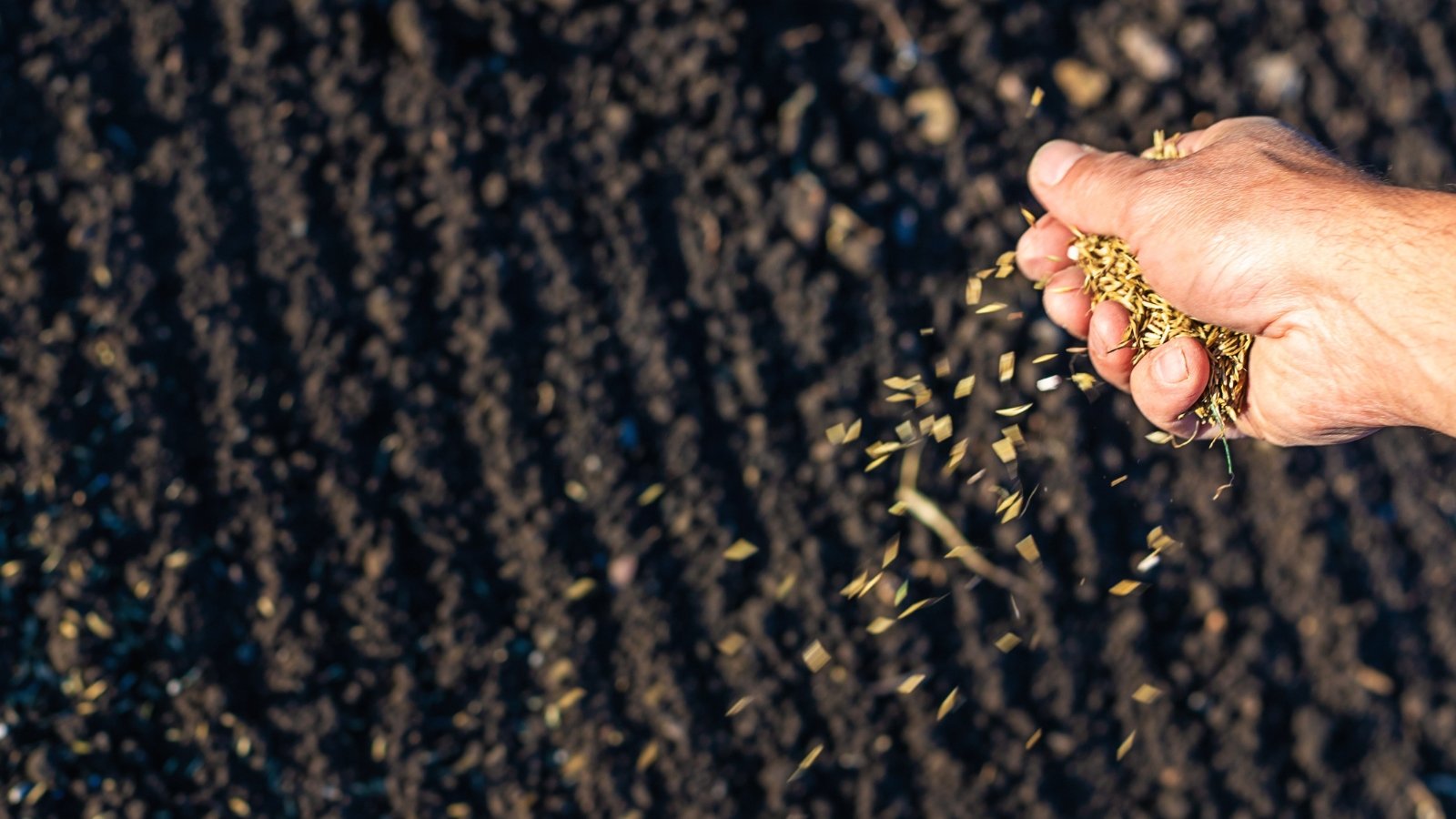
The best time of year to plant grass seed is late summer and early fall. If you miss this window, opt for spring. Air and soil temperatures, as well as seasonal moisture, contribute to healthy growth. Planting in the high heat of summer can cause seedlings stress and weed competition.
In zones 7 and warmer, plant warm-season turfgrass from March through September, avoiding hot and dry spells. They rely on warm conditions and adequate moisture to germinate. Ideal soil temperatures are between 65 to 70℉.
In zones 6 and cooler, sow seeds in mid-August through mid-October. To sprout, they need cool air and soil temperatures with regular moisture. The optimal soil temperature range is 50-60℉. Sow seeds at least 45 days before the anticipated first frost.
When choosing the day to sow, opt for non-windy and non-rainy conditions. The wind carries seeds away and hinders uniform distribution, and rain makes everything sticky and oversaturated. However, if you sow seeds with rain in the forecast for later in the day or week, this is a bonus. Light showers are ideal for watering in the seeds. Be mindful of runoff or washing, and rake them back into place or scatter more to infill.
Overseeding vs. New Lawn
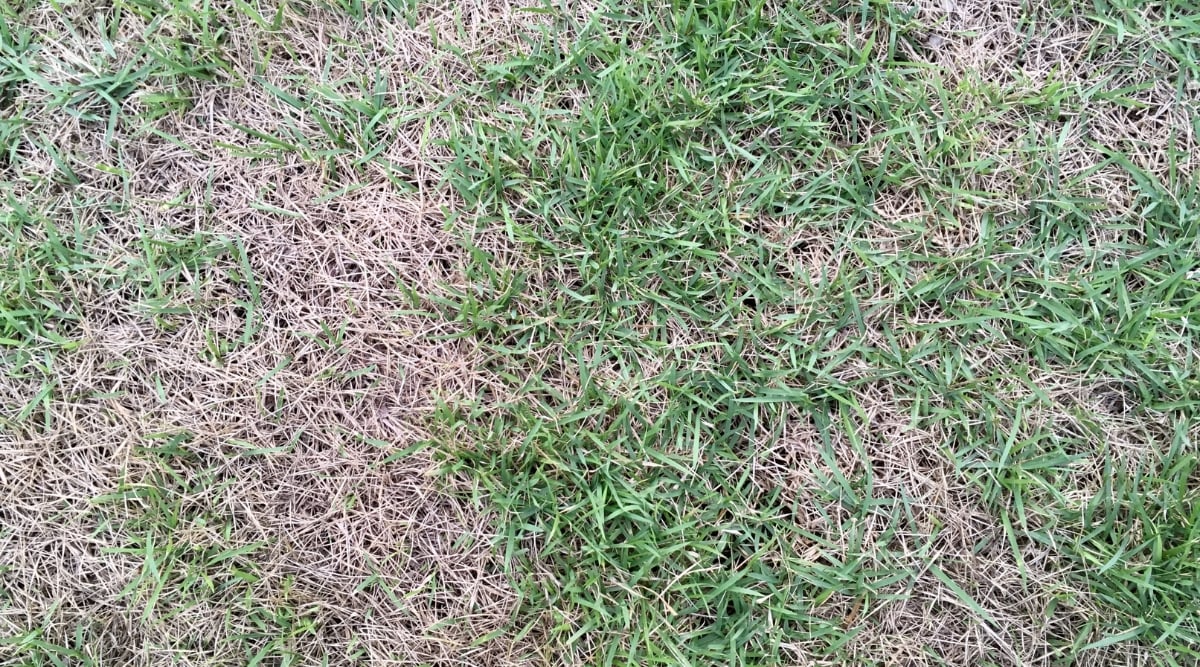
If you have a few bare or thinning patches and an otherwise healthy lawn, overseeding is a streamlined process to make it more lush. Overseeding is adding a layer of seed to existing grass.
Lightly rake bare patches if they have a thatch (dead grass and roots) cover. Add topsoil or compost, and scatter seeds directly over the spot. To thicken the entire lawn area, mow the existing grass to two inches. Spread a layer of seeds over the whole expanse.
Establishing a new lawn or refurbishing an unhealthy one requires more site and soil preparation, which is vital to sustaining lasting growth. Healthy grass over the long term is worth the initial effort. Soon, you’ll have a thriving lawn that will only need patching as needed in seasons to come.
Prepare the Site
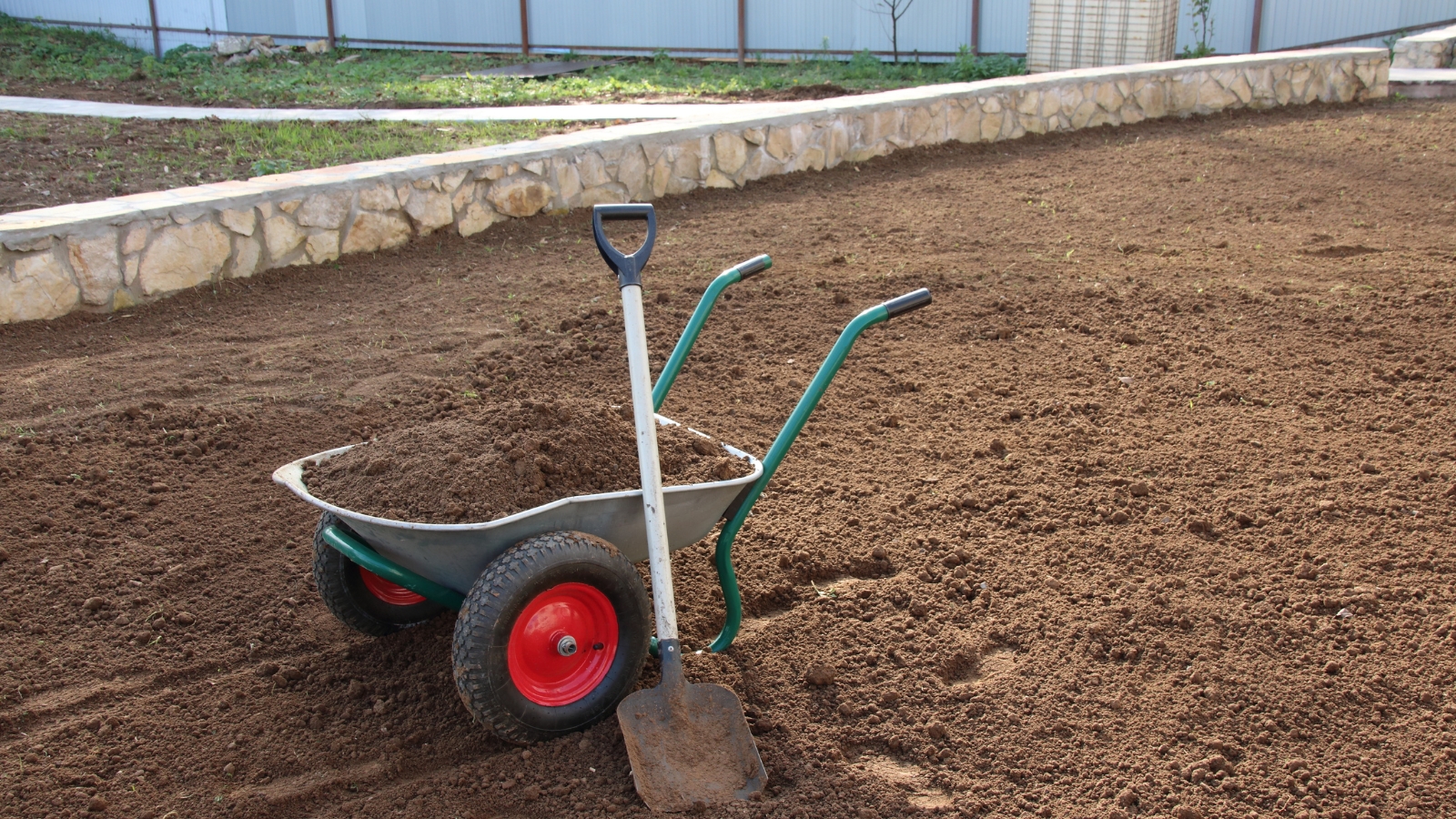
Site preparation involves readying the site for grass seed planting. Clearing, topdressing, and smoothing are essential to set the foundation for success. An at-home soil testing kit or a local university extension service are ideal for testing soil nutrient levels and pH. Opt for a test that interprets the results and provides recommendations for amendments specifically related to turfgrass.
Remove Debris and Vegetation
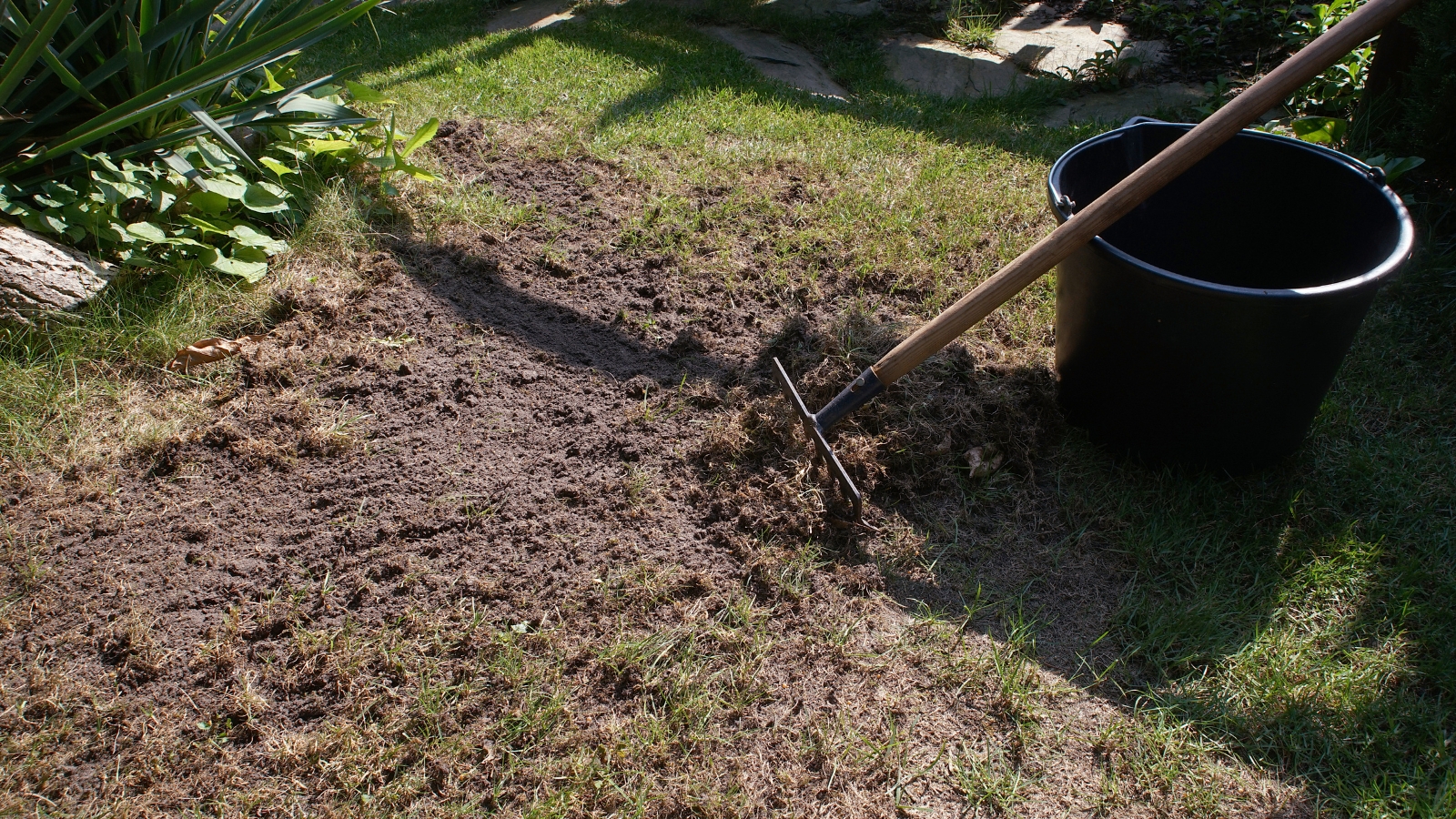
The first step in readying the site is to remove large debris. Limbs, sticks, rocks, and anything that blocks the soil surface is a place where seeds won’t sprout.
Next, assess the surface. If you’re redoing large spans of existing grass or weedy areas, use a sod cutter to remove turf and roots. Sod cutters are available to rent at local hardware or equipment stores, and they save a lot of time and effort if working across a sizeable area.
Dig small areas with a spade to lift grasses, weeds, and roots. If you’re starting with bare earth, like a newly constructed home or re-landscaped yard, lucky you! There is no need to remove existing vegetation.
Amend the Soil
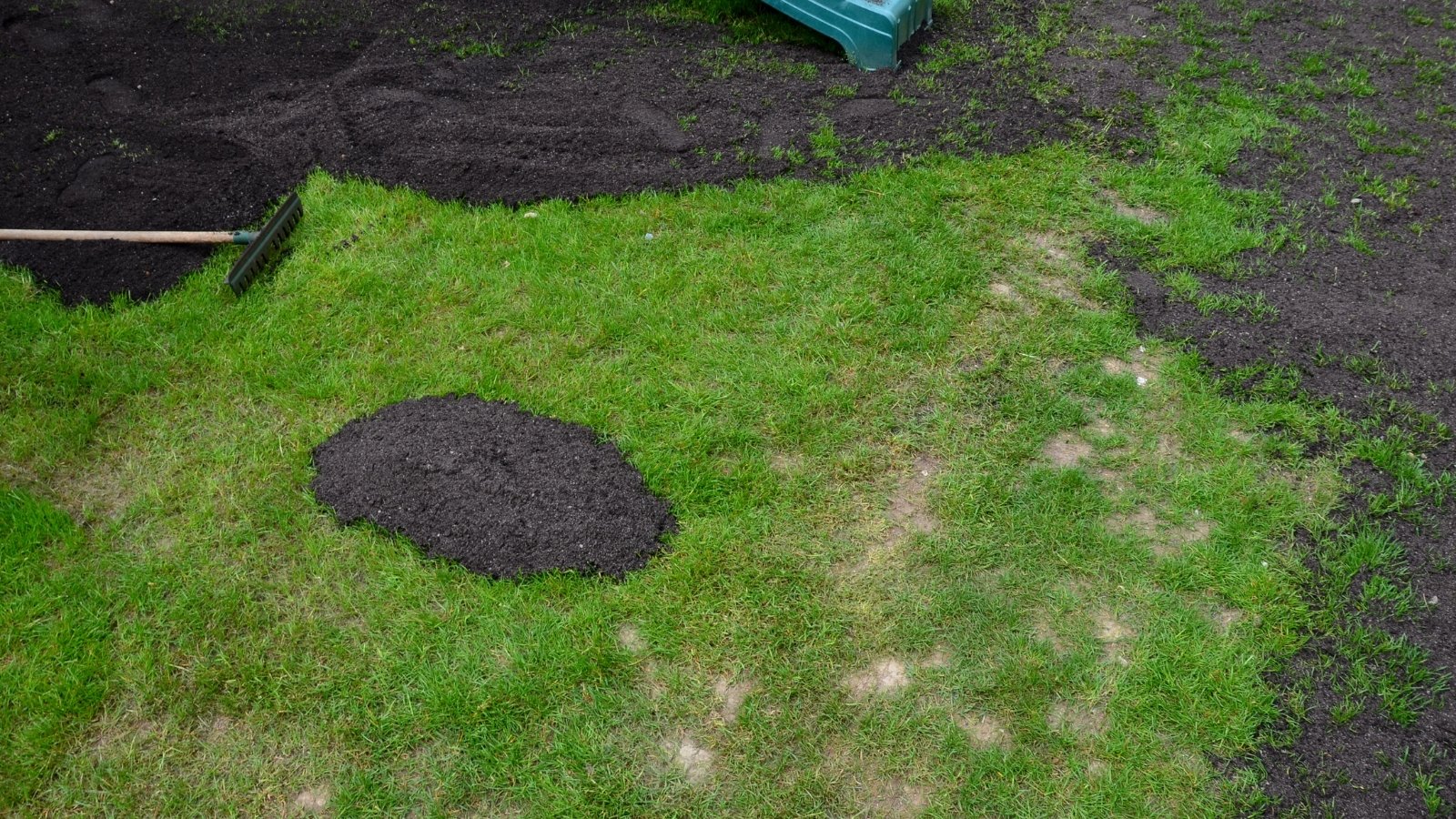
Topdress the site with a two-inch layer of compost and/or screened topsoil (free of rocks and weedy vegetation). Organic matter improves drainage and aeration and provides nutrients. Make sure to use wholly decomposed organic material so it doesn’t introduce viable weed seeds.
After amending, some gardeners opt to till a few inches to mix the compost and topsoil with the existing soil. Lightly turn small areas with a shovel or scuff with a hard rake.
Smooth the Surface
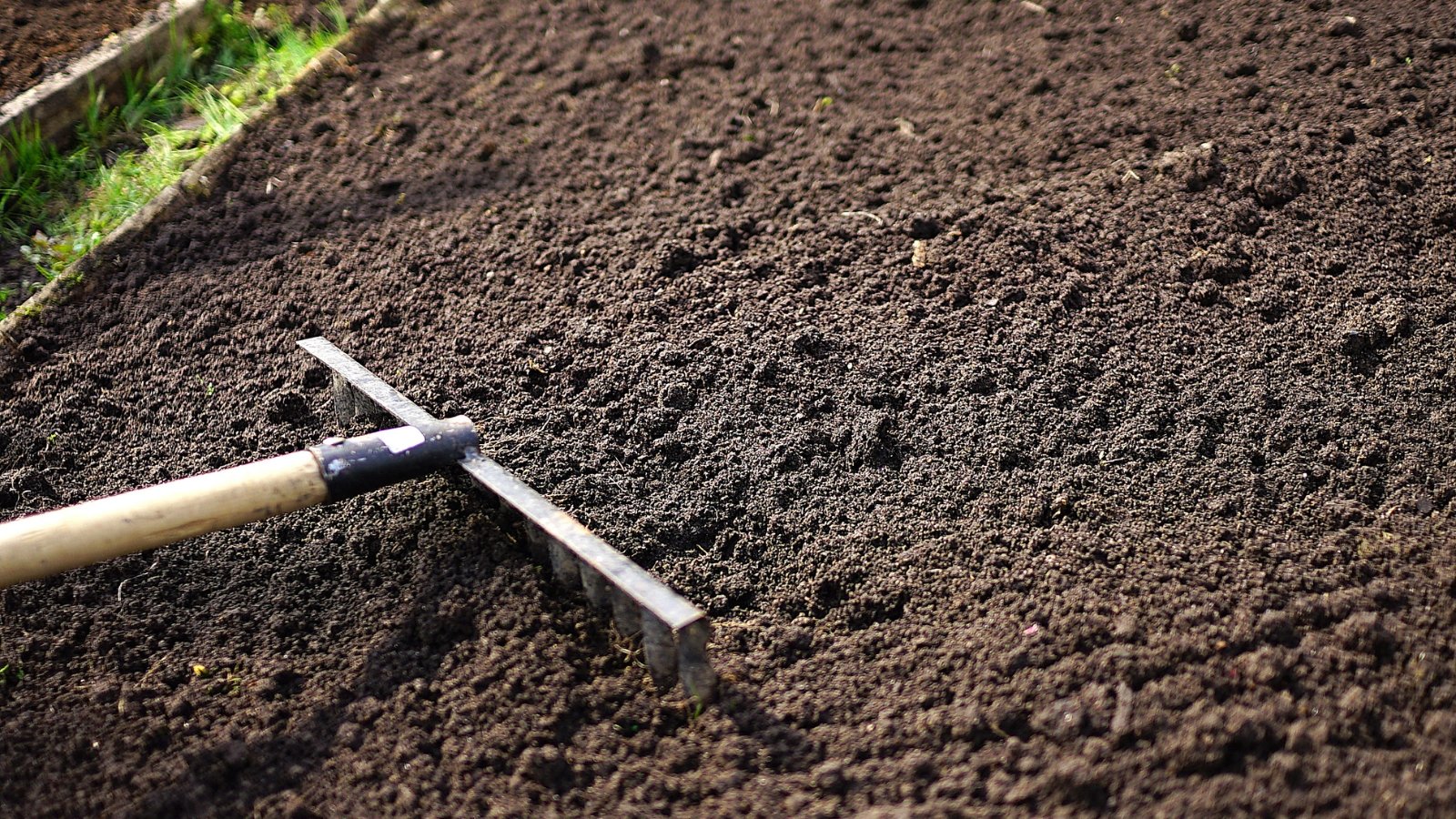
The final step in prepping the site is raking the area to make it smooth. Use a hard garden rake to remove clumps or clods and even out high and low spots to create a relatively even surface. The seeds rely on even soil contact, and a smooth area maximizes coverage, improves drainage, allows even growth, and eases maintenance without hidden ruts or mounds.
Plant the Grass Seeds
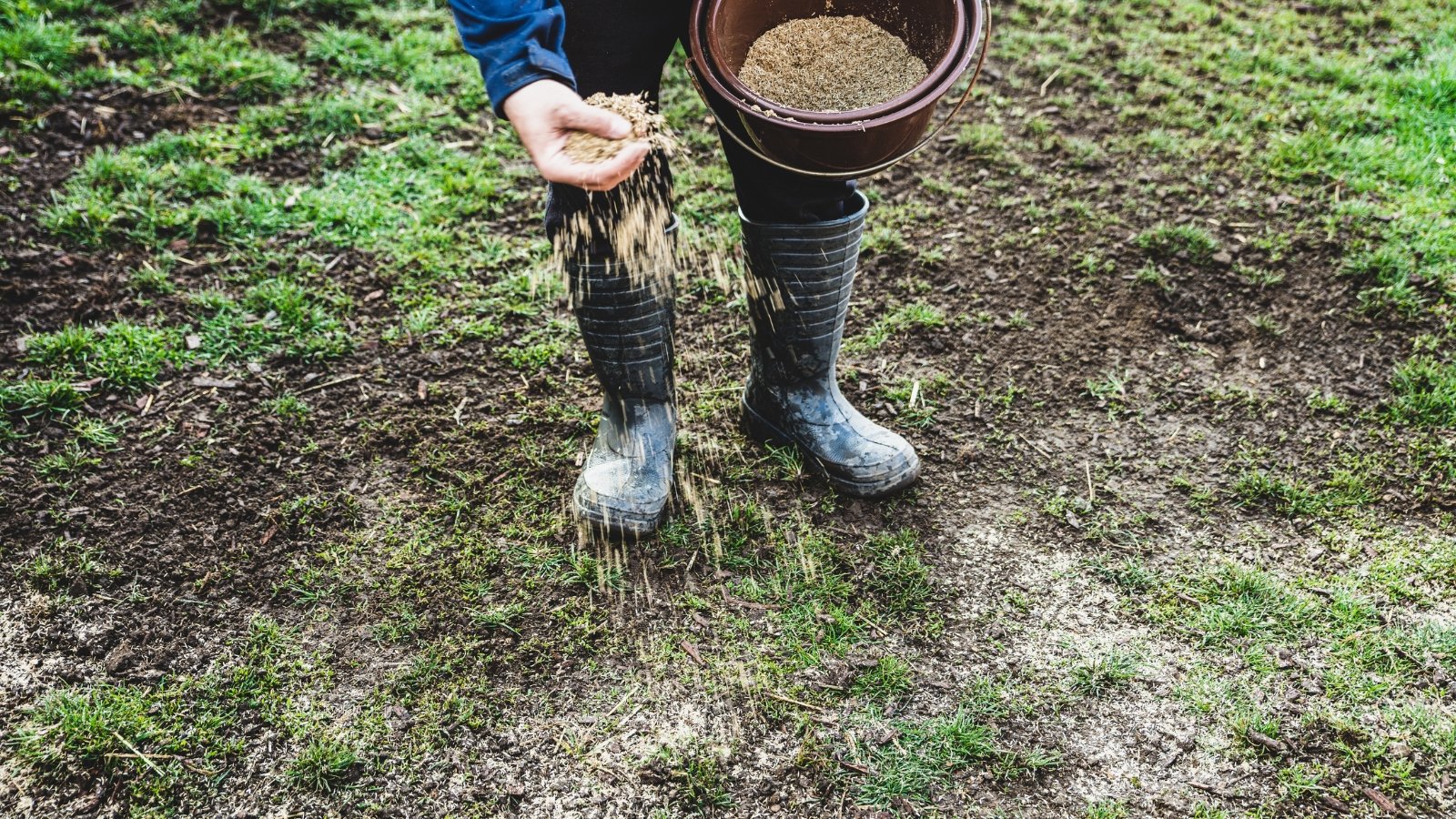
With the site prepped, scattering the seed is easy. Scatter by hand or, for larger areas, use a drop spreader. Spread half of the seeds moving in one direction and the other at a right angle (criss-crossing) for uniform distribution.
If practical, lightly rake in the seeds. Roll the site with a 50 to 100-pound roller to create better soil contact. Walking on the site to tamp seeds works, too, for small areas. Securing the seeds in the soil makes them more likely to stay in place, absorb moisture and sunlight for germination, and root well.
Mulch lightly with clean, weed-free straw for extra seed security. A light layer decomposes as seedlings grow and disappears with the first mowing. If you can’t source weed-free straw, skip this step.
Water Correctly
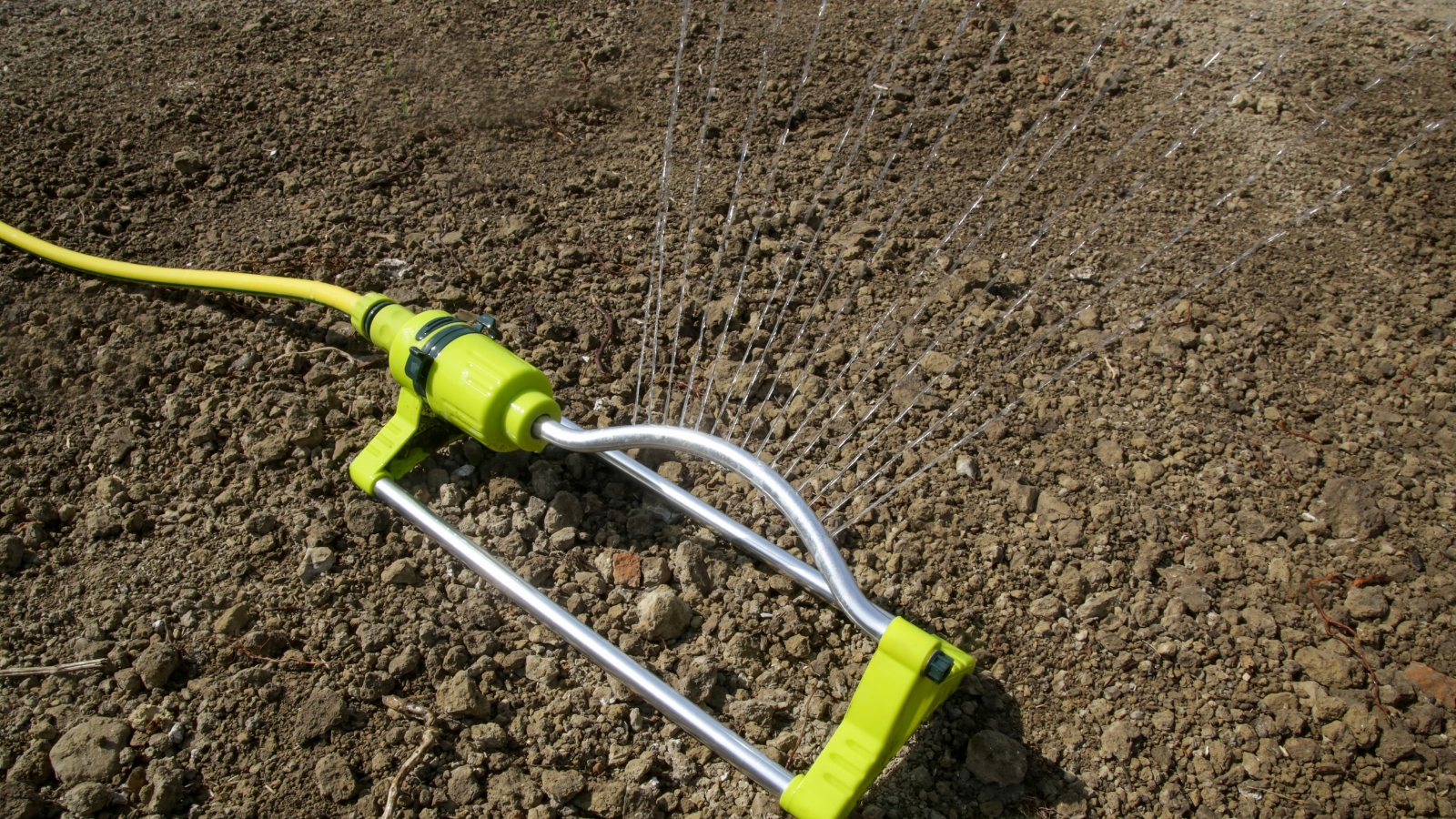
Seeds and seedlings need daily water to thrive. Sometimes, they need it twice daily during hot, windy conditions or dry spells.
Sow grass seeds only if you can rely on ample moisture. Moveable sprinklers or irrigation, in addition to rainfall, work well.
Water lightly to moisten the soil surface, avoiding excess runoff and oversaturation. Seedlings germinate in two to four weeks. Continue daily watering until they’re two inches tall. Reduce water frequency but increase the length of run time. Watering longer allows for consistent deeper watering to promote root development.
Mow and Maintain
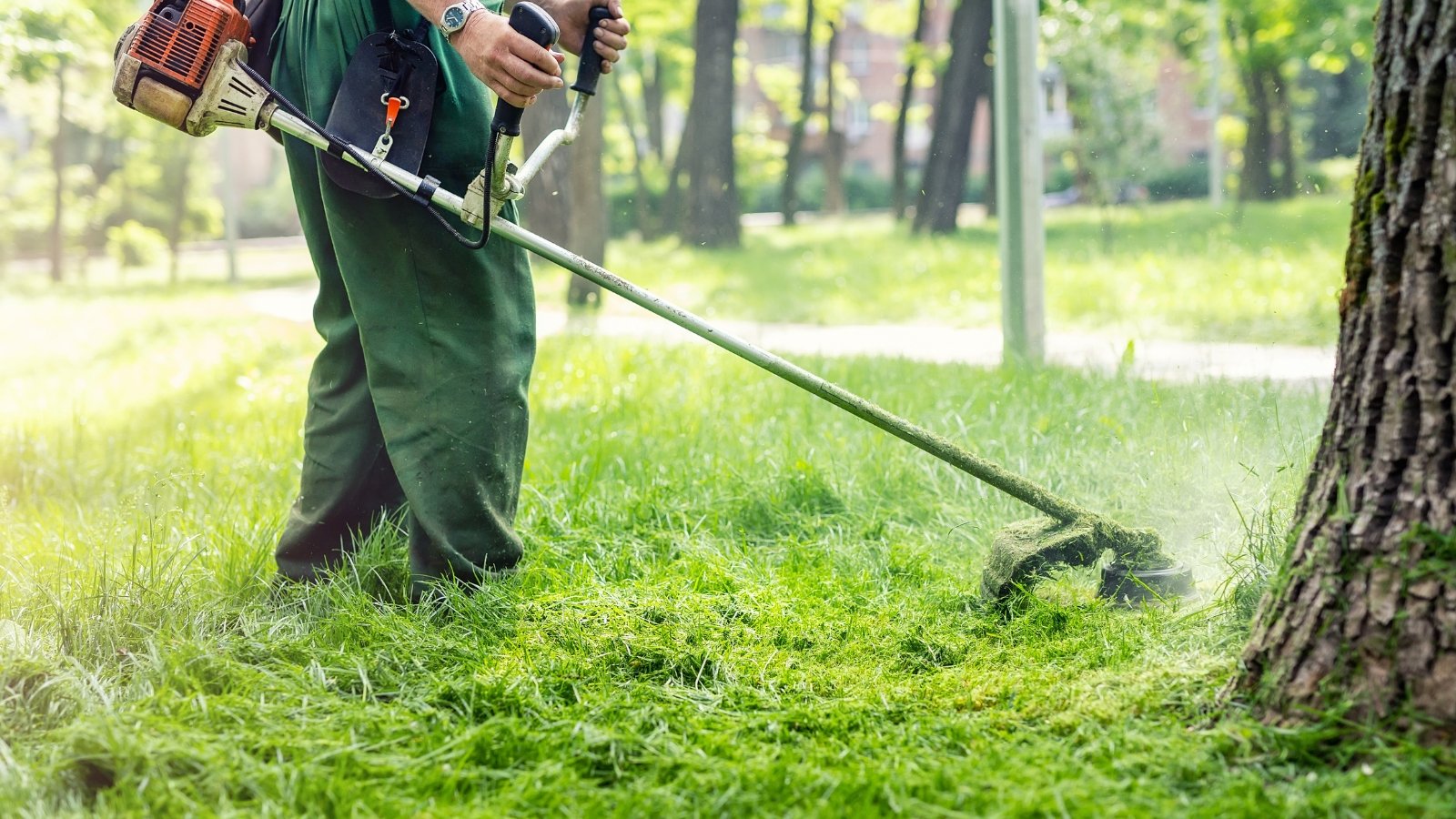
Stay off of newly seeded areas for two weeks or longer. When blades reach four inches high, it’s time to mow. For healthy growth, mow grass to three inches (with a minimum of two inches).
Hearty grass needs weekly mowing during the growing season, while low-maintenance types need less frequent mowing. As growth slows, the mowing frequency should taper off to every other week or two. No mowing is needed when grasses are dormant.
During the growing season, grasses benefit from fertilizer to sustain the best growth. To maintain a lush lawn, follow a regular monthly maintenance schedule for your grass type.
Frequently Asked Questions
Follow application guidelines for scattering grass seed. Doubling up or adding extra does not benefit growing conditions. Seedlings compete for resources like water, sunlight, and nutrients. They become overcrowded, leading to fungal diseases. Focusing on site conditions, grass type, and uniform spreading is best.
Growing grass from seed or installing it as sod requires the same site preparation for a healthy foundation. Sod is mature grass with a layer of soil attached. It creates instant coverage and improvement. With appropriate water, it’s ready to enjoy. Grass seed takes longer to establish but is cost-effective, with more options available by type, blend, and mixture.
Minimizing turf can reduce maintenance, equipment needs, and fertilizer and chemical treatments. Turf alternatives include groundcovers and cover crops. Increase bed space to enjoy smaller grassy areas that highlight plantings.
Ryegrass is often used in southern and western regions when turfgrass browns during winter dormancy. Overseeding with rye when temperatures cool results in fine, green blades throughout mild winters. Growing winter greens means continued mowing. It may compete with existing grass during overlapping growth periods or form thatch among existing blades.

